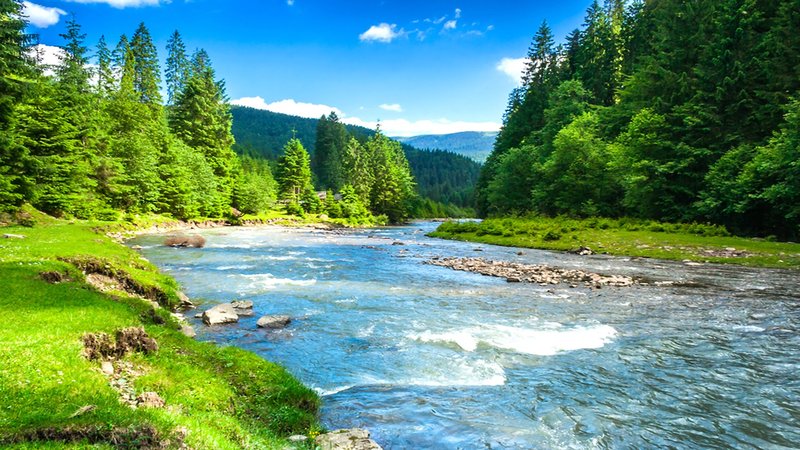
Velvet worms belong to a group of animals called Onychophorans, which might sound pretty fancy, but they’re essentially a cross between a worm and an insect. Think of them as little, squishy, multi-legged hunters themselves. They use their slime to capture prey, but they’re also a meal for other creatures. Imagine their life like a suspenseful movie—sometimes they’re the hero, sometimes they’re the victim. Intrigued? Let’s explore the natural predators of these intriguing creatures and learn just how the balance of life plays out in their rainforest home.
1. Birds: The Aerial Hunters
One of the most common predators of velvet worms in rainforests is none other than birds. Many species, especially the small insectivorous ones, see these little worms as a tasty snack. Picture a brilliant green bird swooping down from the treetops, sharp beak ready to snag a velvet worm off the forest floor. Birds like the **Blue-crowned Manakin** and various **flycatchers** often hunt these worms.
What makes birds particularly effective hunters is their keen eyesight. They can spot a velvet worm hiding beneath the leaves or logs. Once they spot their prey, they swoop down faster than you’d expect. This is a classic example of predators using their unique abilities to survive in the wild. You might be surprised to learn that not all birds are after the same conditions; some prefer to hunt in the early morning when the forest is alive with movement.
Adaptations for Hunting
Birds have several adaptations that make them fantastic at hunting down velvet worms. Their pointed beaks allow them to easily grab the soft bodies of these worms, while their agility helps them navigate through the dense foliage. In some cases, they even use vocal calls to locate their prey, listening for the movement of velvet worms as they scuttle along the leaf litter.
2. Lizards: The Silent Stalkers
Another group of predators that naturally targets velvet worms is lizards. These agile hunters are often found basking in the sun, waiting for the perfect moment to strike. Species like small **skinks** and **geckos** are particularly fond of munching on these gooey creatures. Their hunting style is all about stealth. Picture a lizard, crouched low, blending into the bark of a tree, eyes scanning the forest floor.
What’s interesting about lizards is their speed and agility. They can dart out from their hiding spots in a flash, snagging a velvet worm before it even knows what hit it. Their sharp, tiny teeth are perfect for biting into the soft bodies of these worms. You may be wondering how these lizards spot their prey. Their keen sense of smell and sharp eyesight play an essential role, helping them navigate the rainforest’s complex ecosystem.
The Role of Camouflage
Lizards also have a strong case for camouflage. Their skin patterns mimic the environment, making it easier for them to hide as they hunt. This is a perfect example of evolution at work! By blending in, they can sneak up on unwary velvet worms that are oblivious to the danger lurking nearby.
3. Insects: The Tiny Terrifiers
Not all predators in the rainforest are larger creatures; many are small but mighty. Various insects, such as certain species of **wasps** and **ants**, are known to target velvet worms. While it might seem surprising, these insects pack a powerful punch despite their size. Ants, for instance, will often swarm over a velvet worm, using their huge numbers to overpower it.
These insects are incredibly resourceful. They use their mandibles to grasp and manipulate the worms, often working together to subdue them. You might picture a scene where dozens of ants are marching in formation, each carrying part of a mulched-up velvet worm back to their colony. This shows how even the tiniest creatures have their roles in maintaining the ecosystem.
Unique Strategies of Insect Predators
Insects have some unique strategies for hunting too. For example, certain wasp species lay their eggs inside the bodies of velvet worms. The larva then hatch and consume the worm from the inside out. It’s a gruesome but fascinating way for these insects to survive and reproduce. The cycle of life can sometimes feel harsh, but every part plays a role in nature’s grand design.
4. Mammals: The Nighttime Predators
While birds and insects tend to hunt during the day, some larger mammals are on the prowl at night. Creatures like **opossums** and **small carnivorous marsupials** may also feast on velvet worms. These nocturnal hunters are particularly adept at navigating through the underbrush, using their acute sense of smell to locate their prey. Imagine an opossum quietly scouting the forest floor under the cover of darkness, its nose twitching as it picks up the scent of a nearby velvet worm.
These mammals are more adaptable than some might think. They can use their claws to dig into the leaf litter and disturb potential hiding spots for velvet worms. This hunting style shows that not all predators rely solely on speed or agility—some use their intelligence and senses to their advantage.
Adaptations of Nocturnal Predators
Nocturnal mammals also have special adaptations that help them hunt in low light. Their larger eyes can capture more light, allowing them to see better in the dark. Plus, their soft, padded feet ensure that they can move stealthily, increasing their chances of catching a velvet worm off guard.
5. Fungi and Bacteria: The Hidden Threats
Although they aren’t physical predators, let’s not forget the role of fungi and bacteria in the life cycle of velvet worms. These organisms can be harmful or even deadly to velvet worms when they invade their bodies. It’s like a silent predator lurking in the shadows, waiting for the perfect opportunity to strike.
In the moist environment of the rainforest, pathogens spread rapidly. Fungi might spore on a velvet worm, weakening it over time. This subtle threat is a crucial part of the ecosystem, as it helps control populations. Interestingly, this dynamic highlights how interconnected life can be; even the tiniest organisms play a pivotal role in the balance of nature.
The Cycle of Life
The impact of fungi and bacteria isn’t just about predation—it’s about the cycle of life. When a velvet worm succumbs to these unseen threats, it enriches the soil with nutrients, fostering growth for other plants and animals. This illustrates an important concept: every creature, whether predator or prey, contributes to the ecosystem’s health.
So there you have it—the many natural predators of velvet worms in rainforests. From birds and lizards to tiny insects and nocturnal mammals, each predator plays a part in the intricate web of life. It’s a fascinating reminder that every creature, big or small, has a role to play in maintaining the delicate balance of the ecosystem.
Understanding these interactions deepens our appreciation for nature. The velvet worm’s life may seem simplistic, but it’s woven into a much larger story. As we continue to study these unique creatures and their predators, we gain insights into the complex relationships that shape our world—reminding us just how interconnected everything truly is.

